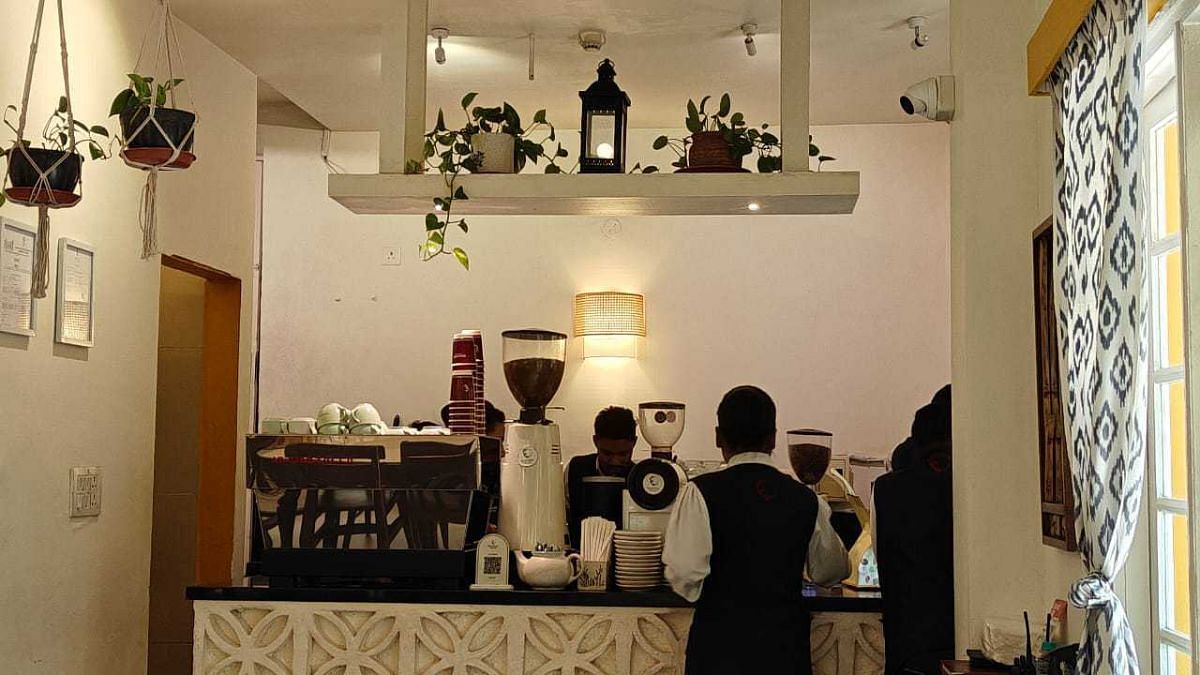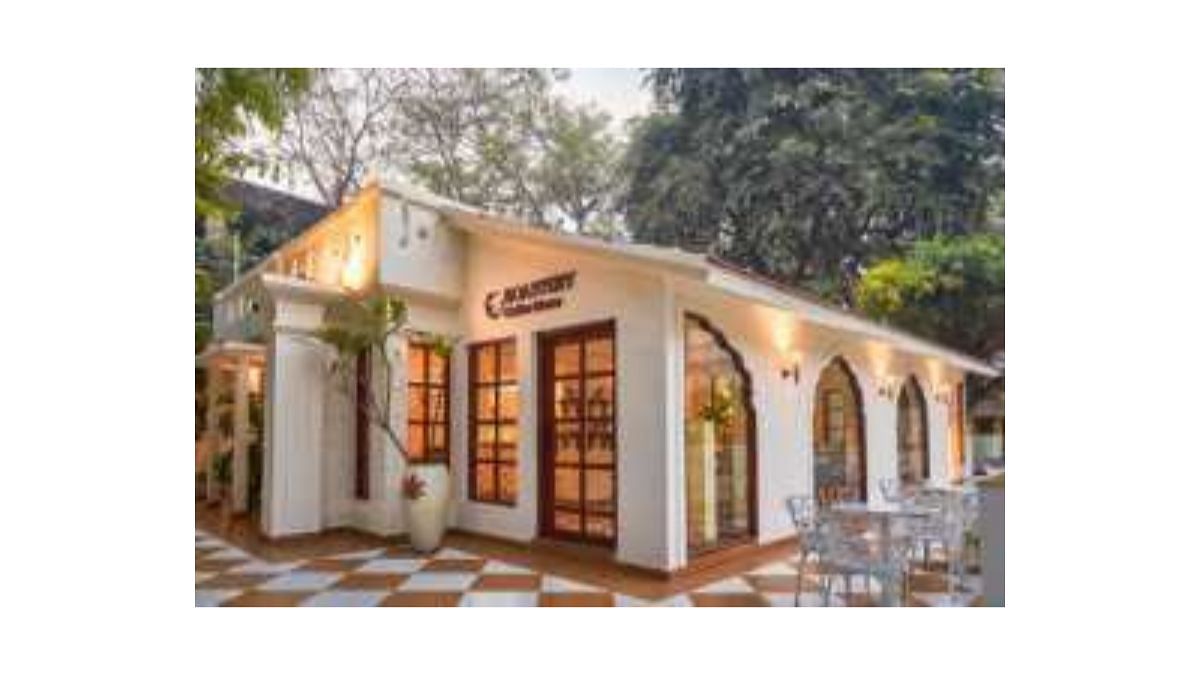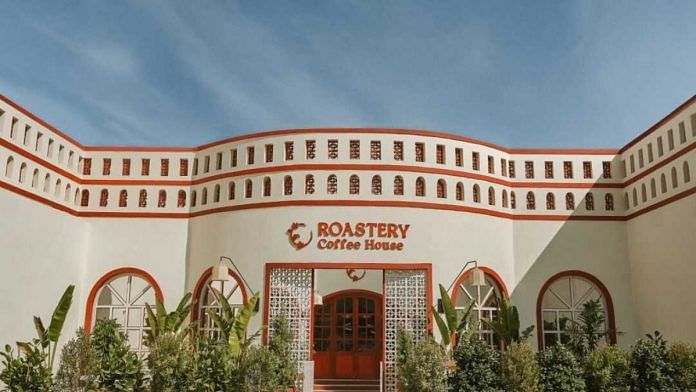Hyderabad/Delhi: Three generations of a family gather at a table at the Roastery Coffee House in Hyderabad. The grandmother takes a sip of her cranberry coffee. “Oh, this is very nice. No milk, but the coffee feeling is strong,” she pronounced her verdict. Across their table, a young couple orders two Vietnamese iced coffees. “I am telling you, all of the coffees are good. We will try more,” said the girl enthusiastically.
Since opening its doors in Hyderabad’s Banjara Hills in 2017, the Roastery has become a beloved hangout spot for just about everyone—families catching up over brunch, office-goers in need of a caffeine boost, college students on awkward first dates, and even the occasional Tollywood star from nearby Jubilee Hills. But its influence is not limited to Hyderabad alone.
Founder Nishant Sinha is brewing success from Hyderabad to Helsinki. Since his 2017 entrepreneurial venture, he’s opened Roastery Coffee Houses in Delhi, Kolkata, Noida, Jaipur, Lucknow, and even in Finland. His coffee houses are not utilitarian box-like cafes with compact seating and cookie-cutter menus. Instead, they are sprawling spaces that celebrate local architecture while promoting Indian specialty coffees — with a bougie twist.
“My vision was clear. We are a customer-first coffee house, and the brand is Indian in look, feel, and taste. We wanted to be known for serving single-state specialty coffee, and the hospitality we provide,” said Sinha, who offers single-origin coffees from estates in Ratnagairi. He also co-founded the popular bean-to-bar chocolate company, Colocal.
He started with a salary of Rs 6,000 per month as a barista, and now runs 15 outlets. “We’re India’s largest bootstrapped and only profitable cafe chain.”

Also read: Delhi through vintage Russian camera lenses. This exhibition captures monuments to malls
Redefining Coffee house
All the Roastery coffee houses, be it on Banjara Hills or in Noida Sector 144, are in bungalows. Some have been upscaled, others built from scratch to recreate an old-world charm.
Each Roastery outlet also pays tribute to the city it is located in. Hyderabad’s Kokapet outlet is an ode to the Charminar. The chessboard floors and the yellow and white walls make the coffee, and potted palm trees also make it a regular place for the Instagram generation..The new outlet in Hyderabad utilises the bigger space with a massive coffee bar, and uses terracotta brown in its colouring on the walls outside. Its Helsinki outlet, too, continues the Roastery tradition of modern Indian architecture and the signature checkboard floor. With the popularity of monsoon malabar in the country, the outlet wants to make its mark by the same ethos it has followed for India-specialty Indian coffee and freshly made food.
Sinha added several creative touches to change the way coffee is not just sourced and roasted, but also served. Its trademarked cranberry coffee is served in wine glasses. Even coffee grinds are used for signature concoctions, or just to provide nutrition to the outlet’s plants. This way, Sinha ensures that the roasting process is free.

“It is not just redefining what a coffee house can look like, but also how we spend our time–in a rush, or working, or slowing down and enjoying conversations,” he said. While coffee is king, the menu has been crafted to entice customers. Zucchini fries and mac-and-fish jostle for space with regular offerings like pizzas, sandwiches, and burgers.
Sinha insists that he is chasing good coffee and not prime locations, though the Delhi outpost of the roastery is in Khan Market.
“Unlike other coffee brands, we focus on the space, and the staff, instead of paying a hefty amount for real estate. When people like your space and coffee, they will travel, even if the shop is in a galli.”
Barista to entrepreneur
Nishant Sinha is an unlikely entrepreneur. Having grown up in the railway quarters of Hajipur in Bihar, his roots are ‘middle class’. His father worked in the railway catering sector, and Sinha’s dream of landing a stable job was a practical aspiration.
He started college at the Institute of Hotel Management, Jodhpur, but was unable to get a job with any of the premier brands that came for campus placements. In desperation, he turned to his mentor and professor, Dr Sanjeev Saxena.
“I advised him to follow his passion instead of being disappointed over not landing a job in a bigger hotel. Sinha was average in his studies, but he made up for it in his willingness to listen and ask for advice, whenever he encountered a roadblock,” said Saxena, who is now an associate professor at Assam University, Silchar.
The professor organised an interview for a barista at a Cafe Coffee Day that Sinha cracked in 2007.
Sinha’s stint as a barista started with the CCD outlet at Delhi airport. The next year, he joined Lavazza, where he learned the art of roasting, mastered the science behind the back-end operations, and developed a wide network of farmers. Every new job was an inroad into the business of coffee, which was slowly booming in India. In 2017, after working with brands like Hindustan Unilever and even as a consultant to design cafe menus, he decided to take the plunge with his own venture.
“I had no capital, except for trust and goodwill. I borrowed money from friends and family, from a lakh from someone to thousands from another. I gathered Rs 25 lakh in this manner, and rented the house where the cafe in Hyderabad now stands,” said Sinha.
From plants to decor and colour palette, Sinha brainstormed everything. He welcomed customers, listened to their compliments and complaints, and created the foundation for service that is followed in each of the coffee outlets. The end result is an inviting ambience that is targeted at everyone from seven to 70 years old.
According to Sinha, all the profits are put back into the business, which he runs with his wife, Sheetal Saxena, and his brother Prashant. Saxena and Sinha met on a matrimonial app, and it was his honesty that drew her in.
“I remember listening to him talk about his ambitions, and how much family mattered to him–the values that aligned with mine,” said Saxena.
The founder’s vision for expansion is not one of opening outlets or creating franchises at breakneck speed.
“I do not want to be pulled in by the numbers game. We want a hundred cafes, but not in the next three years. We will pace it out, and build one at a time,” said Sinha.
(Edited by Ratan Priya)







Wanted to point out that the Delhi outlets are not in prime real estate: apart from Noida, the second outlet is in Dwarka.